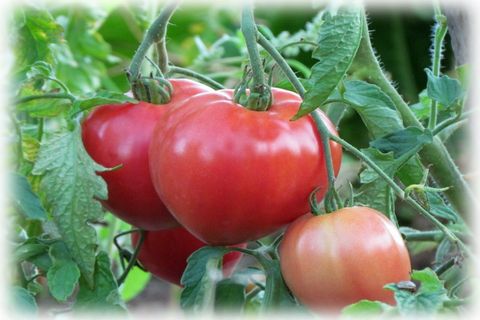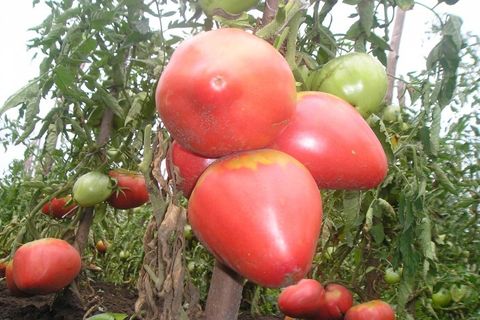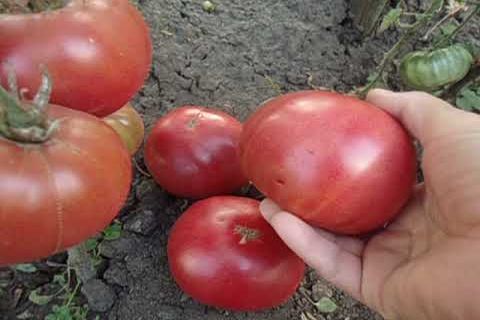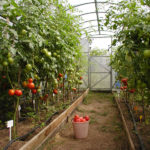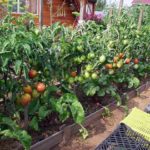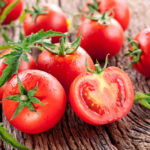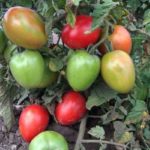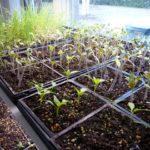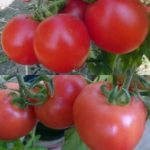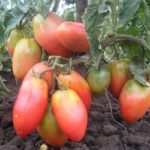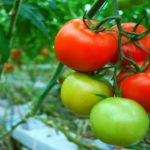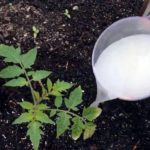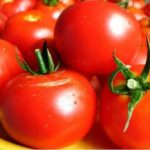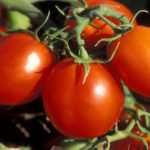Altai varieties are suitable for those gardeners who want to add a little variety. In total, the variety has three shades: yellow, pink and red. The taste and description of the variety are similar.
Characteristics of the variety
This variety of tomato is late-ripening and has good yield. Ripening time is 110 – 115 days. The harvest begins from mid-summer until the onset of the first frost.
An adult plant reaches a height of about one and a half meters. It has large dark green leaves. 4–6 fruits grow on a bush, weighing up to 300 g.The tomato is distinguished by its fleshy and juicy pulp and has a thin but dense peel. The peel, like the pulp, is warm pink.
Origin and use
The variety was bred by Russian specialists. You can grow tomatoes in open ground, so under the film. The resulting harvest is stored for a long time and tolerates transportation well. Tomatoes of this variety are grown for personal and industrial use. Unripe tomatoes ripen quickly if the fruit is stored at room temperature.
The Altai tomato variety is classified as a salad type, which allows the tomatoes to be used in the preparation of sandwiches, salads, juice, soups, and purees. The fruits of this variety make excellent winter preparations.
Positive and negative features of Altai tomato
The Altai pink tomato has many advantages:
- The variety is resistant to various diseases, which reduces the financial and time costs of growing tomatoes.
- Tolerates any vagaries of weather, from drought to rainy summer.
- Not picky. Cultivation and care require a minimum of effort and time.
- High yield, which allows you to obtain a large harvest of tomatoes in small areas.
- Tomatoes have good taste.
The disadvantages of tomatoes of this variety include the need to tie up and shape the bushes and the fact that the yield strongly depends on the amount of fertilizing and the type of soil.
Features of cultivation
The variety has good reviews. Tomatoes are recommended to be planted as seedlings in open ground. Before planting, the seeds must be disinfected by immersing them in a solution of potassium permanganate. After the procedure, the seeds are washed, dried, and doused with special agents that stimulate growth and increase the number of seedlings.
Tomato prefers soil from the garden, where fertilizers or peat are added.Sometimes a small amount of sand or ash is introduced. Containers and small containers with peat are well suited for sowing. If we plant seeds in cups, we need to sprinkle peat on top and spray them with water.
If you plant the tomatoes in different containers, you won’t need to pick up the seedlings in the future. Cover the container with film and place in a warm place. For good germination, it is necessary to provide a temperature of 25 degrees.
Seedlings are planted in the ground where cruciferous plants previously grew. It is not recommended to plant where peppers or eggplants were grown in the past. If there is no suitable place, the top layer of soil in the greenhouse is replaced with a new one containing sand and peat. Tomatoes should be planted in well-loose soil. The seedlings are planted in holes, the distance between which should be approximately half a meter, and the row spacing should be 70 centimeters.
Before planting, fertilizers are sprinkled over the holes. Near each hole, supports are placed, for which stakes or rods are used, sometimes trellises. In the future, tomato bushes will be tied to them.
For irrigation, use warm water, which should be left for 24 hours. Watering is carried out as needed, as soon as the top layer of the base dries. Between irrigations, the soil should be loosened, otherwise a crust will form on the surface, which will not allow air to pass to the roots. Throughout the season it is necessary to fertilize, only three to four times. Organic compounds and mineral complexes are used as fertilizers.
During the formation of the bush, it is necessary to leave one or two stems, all excess stepsons are removed. If the plant is too elongated, the top is cut off. The lower leaves are removed, improving air exchange.In addition, the fruits receive more light this way. Some gardeners remove low-quality flowers.
Diseases and pests of tomatoes
This variety of tomato has a strong immunity to tomato diseases and harmful insects, but it is better to carry out preventive measures periodically. For this purpose, you should water the bushes with a solution of copper sulfate and potassium permanganate.
To avoid root rot, the base is constantly loosened, removing weeds. Mulching with various materials, such as straw, peat or humus, helps.
Sometimes tomato bushes are attacked by pests. Most often this happens when the tomato produces flowers. For prevention, it is necessary to inspect all tomato bushes weekly. To combat insects, tomatoes are sprayed with poison or a solution of potassium permanganate. The use of chemical toxins is permissible only before fruiting begins, and during the period of fruit ripening, pest control is carried out using folk remedies.
Harvesting
The harvest must be harvested regularly, every 4 to 5 days, depending on the time of ripening. This way the tomato bush will have more strength to develop and ripen other tomatoes. If a defective fruit is noted on the bush, the marriage should be disrupted so that it does not take away the strength of the bush.
Tomatoes are divided into green, milk, brown and pink. They are torn off depending on the purpose of further use. If the tomatoes are to be eaten fresh, only the pink fruits should be picked. For storage it is necessary to collect brown or milky ones. If you plan to store tomatoes for a long time, it is better to leave the stalk, otherwise a wound will form into which bacteria can enter, causing the tomato to rot.
The excellent characteristics of the Altai tomato make it possible to grow this variety in any region, obtaining an excellent harvest.If you properly care for the garden bed, tomato bushes will delight the grower with fruits all season long. From ripe tomatoes you can collect seeds for further sowing.

